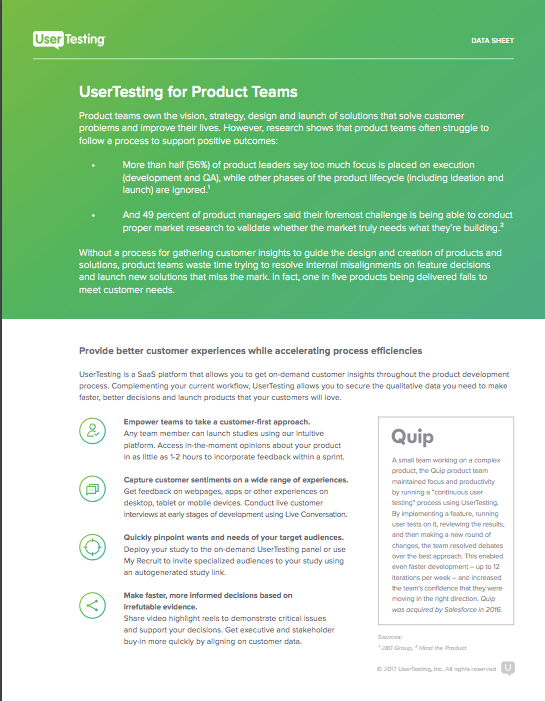
Thrv and the jobs-to-be-done framework

As I started to look up “thrv,” the company whose founder would be speaking at UserTesting on behalf of ProductTank, the first option that displayed on my search bar was “thrv jobs to be done,” demonstrating the strong connection between the product management software firm and the product theory introduced by Harvard Business School professor Clay Christensen.

Jobs-to-be-done is a framework that encourages product leaders to think beyond customer demographics or personas (who your customers are), to focus instead on what they need. And if a need can be defined in the context of a ‘job,’ then your customers are ‘hiring’ products and services that help them ‘do’ that job.
Customers don’t want your product, they want to get their job done. - Clay Christensen
During the workshop, thrv Founder and CEO Jay Haynes led the room of current and aspiring product managers through exercises that refocused on the essentials of product design: to help customers do a job—more quickly and more accurately.
Experiences that are slow and inaccurate cause anxiety
He said that experiences that are slow and inaccurate cause anxiety—a point with which many of us probably wholeheartedly agree. Whether it’s the ability to purchase an item on an eCommerce site or check the current balance of our checking account using a banking app, we want to know that the information that we are interacting with is up-to-date and correct, and that we can accomplish the task at hand in as little time as possible (and with as few steps as possible).
When it comes to accomplishing a task, something seemingly basic and straightforward is actually made up of a number of goals. Jay shared that a goal is made up of an action verb and an object. A goal does not contain a solution. So if a customer’s task is to buy a shirt, this is actually made up of a number of goals, including evaluating the channels (online vs. in-store), evaluating vendors, searching for shirts, assessing the options, selecting an option, placing it one’s shopping cart… and so forth. Product leaders need to consider and scrutinize every goal that their customers encounter to see if existing inefficiencies or inaccuracies present a pain point worth addressing and fixing.
Asking ‘why’ provides valuable context about customer needs
Jay went on to say that for every goal, there is a level of abstraction that provides important context. His example was the goal of monitoring blood pressure. The higher level reason is to optimize health. However, he noted that there could be a number of reasons why a customer would take up this goal, such as managing or preventing diabetes and heart disease as just a couple of reasons in a very long list.
This line of thinking runs similar to our philosophy at UserTesting. At face value, there are many things that we can surmise or assume based on data or observed actions. Whether it’s via customer empathy or regression of data, we can get to a certain level of understanding clinically and from afar. But to really understand the reason behind customers’ decisions and behaviors, it’s crucial to ask and understand ‘why’ and to get as much qualitative, contextualizing information as possible. Doing so will help you create better products and experiences that align with customer needs and expectations.
Help customers get a job done more quickly and accurately
As he wrapped up, Jay contextualized his message for the audience, explicitly stating the jobs-to-be-done for product leaders. He said, “Customers don’t want your features, they want to get their job done. This is the job that you’re going to do for your customer. It’s about the positive feelings you will create – not products, not features.” More specifically, he advised, “Look at your roadmap, and ask yourselves, 'Do these features improve speed and accuracy for my customers?'”
In this Article






